Fake! They will say some about artificial stone and will be right ...
|
|
The foundation is the main part of any structure, therefore, from the quality of its manufacture ... |
The floors in the room are most undergoing loads, but an impeccable surface ... |
How to make heating in a greenhouse
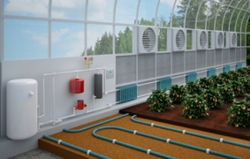
The greenhouse is called the best option for growing vegetable and fruit crops in climate conditions, which are characterized by abundant precipitation, frosts and private winds. First of all, the early crop from its greenhouse is collected thanks to the heating system, because for most plants of solar radiation it is enough only in the summer. If you plan to use your greenhouse throughout the year, such as, for example, a winter garden, the question of how to make heating in a greenhouse should become key to you.
Table of contents:
- Why is a heating system needed
- Solar heating and batteries
- Air heating
- Gas heating
- Installation of a solid fuel boiler
- Stove heating
- Water heating
- The system is a warm floor
Why is a heating system needed
Did you set out the goal of growing seedlings, herbs and vegetables in the spring months? Then, to obtain the crop, the heating system is not needed. But the cultivation of exotic fruits and fresh vegetables in harsh frosts is not possible without special equipment in the structure, because the minimum temperature that should be maintained in a greenhouse is 18 degrees above zero. And in this case, you can not do with the impenetrable and warm walls.
The most budgetary method of heating a greenhouse if a heating main is laid under a summer cottage. Then find the necessary place, and the problem of how to carry out heating in the greenhouse will be resolved forever. In other cases, it is more difficult to organize heating in such a structure, but it is quite real.
First you should understand what are possible to date the methods of homemade heating of greenhouses. There are three varieties of heating: biological, sunny and technical. Methods of heating according to the latest technique are known a lot, and you can choose any. Stove heating, natural gas, electricity, hot water can be used.
Solar heating and batteries
The task for greenhouses and greenhouses is the creation of a microclimate, which is favorable for good plant growth. The necessary humidity and heat are the main indicators of a favorable environment. The cheapest way of heating greenhouses is sunny.
The sun's rays penetrate through the transparent coating of the greenhouse, heat the soil and objects in it, and the air warms up from them. The main task of the gardener is to choose a place for the greenhouse that will be the most lit during the day.
If there is no way, then you should give preference to the place where the sun has shine in the morning so that the earth warms up from the beginning of the day. And the temperature in the greenhouse will rise in the evening to the maximum level. A place for a greenhouse must be chosen without drafts so that the coating does not cool. Additionally, it is recommended to create obstacles for the wind.
When choosing the shape of the greenhouse, it is better to give preference to the arched vault, because such a form of heat loss contributes to the least. To provide the soil of the best heating, the height of the greenhouse should not be done too much.
You can arrange the heating of the greenhouse with the help of solar heat accumulators. First, dig a hole of 15 centimeters in a greenhouse and cover the ground with a layer of a heat insulator. Place a layer of polyethylene film for waterproofing on top.
Then, coarse wet sand should be laid on top and covered all this with dug soil. Due to the energy of the sun, which accumulates, this simple device will allow even at a temperature of 10 degrees Celsius to maintain a satisfactory temperature in the greenhouse.
Air heating
The simplest option for heating greenhouses or greenhouses is the device of primitive air heating. To do this, take a segment of a steel pipe, which has a diameter of 50-60 centimeters and a length of about 2-2.5 meters. Enter one end of the pipe into the film greenhouse, dilute the bonfire under the other.
And the last thing to do is to keep a bonfire constantly. The air in the pipe will quickly heat up, then it will enter the greenhouse and give the warmth to the grown berry and vegetable crops. A similar method of heating is really light, but completely uncomfortable, because the fire needs it constantly.
Gas heating
The advantage of gas is its stability in terms of feed, but the final price of products from the greenhouse will truly surprise you. Therefore, if the heating of the greenhouse with gas in the winter cold lasts only a few weeks, then pulling the wire from a residential building and buying expensive pipes is not at all. It is enough to take several cylinders for this purpose, they are enough for a long time.
Remember that an excess of carbon dioxide on the condition of plants does not affect the most positive way, and therefore such a greenhouse should necessarily ventilate well. In order to remove combustion waste, it is recommended to use an exhaust device to ensure a constant flow of oxygen into a greenhouse.
So that the lack of oxygen does not provoke the cessation of the combustion process and the release of gas into the air, it is better, of course, to purchase heating devices that are equipped with an automatic protective device. As soon as the gas supply to the burner stops, the sensors will immediately work.
Installation of a solid fuel boiler
The heating system in the greenhouse can be organized using a solid fuel boiler. The boiler itself can be installed directly in the greenhouse itself or in a separate room. The advantages of the second option are that you can lay fuel or firewood into the boiler without going into the structure of the greenhouse. In addition, the boiler and fuel will not occupy a valuable place in the greenhouse.
It is necessary to lay fuel in the heat generator twice a day, nothing more is required. And at the same time, such a boiler is absolutely fireproof, and therefore at night it can be boldly left without any control. In addition, fuel consumption is small enough. And the minus of the heating of the greenhouse using a solid fuel boiler is that the device produces a little energy that would not be an extra greenhouse.
Stove heating
The technical method of heating greenhouses involves the installation of special furnaces. Such designs are suitable for use in rooms that have an area of \u200b\u200bapproximately 15 meters square. There are 2 technologies for heating the greenhouse using a furnace.
First option
The simplest furnace for the greenhouse consists directly of the furnace itself, a horizontal chimney and a chimney. To protect seedlings and vegetables from smoke and soot, as well as from changes in temperature, the opening of the furnace is customary to remove the greenhouses into the vestibule. The chimney channel of the furnace passing under the racks must be laid with a slight overstation to the pipe (approximately 1.5 centimeters per meter of the length of the chimney) to create a more effective traction.
Be sure to leave the channel at the input of the channel to remove products in the smoke pipe for cleaning and inciting the chimney channel before the stove will drown with weak traction in bad weather.
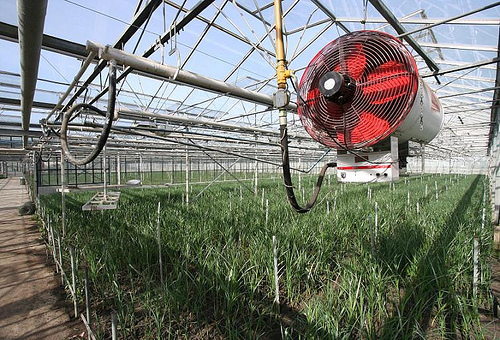
The distance between the greenhouse walls, stove and chimney according to the safety rules and the calculation of the heating of greenhouses should reach 25 centimeters, and the minimum distance between the rack and the top of the chimney is about 15 centimeters. After installing the furnace, the chimney channel and the pipe inside the greenhouse, it is necessary to whitewash with chalk or lime. In the future, this will detect cracks on time.
Unlike the electric heating of the greenhouse, classic stove heating is not so burdensome in financial terms. So, you can build an ordinary greenhouse furnace with a horizontal chimney or bore without special costs with your own hand.
The second option
Take a large barrel, with a capacity of approximately 3 cubes. This will be a certain basis for future equipment for heating the greenhouse. In order not to rust, paint the barrel from the inside in two layers. Inside the barrel, it is customary to make holes for the chimney channel, stove, expansion tank and drain crane. The stove needs to be boiled and inserted into a barrel.
A chimney should be removed from the barrel and a pipe 5 meters high on the street. A homemade expansion tank is mounted on a barrel by about 20 liters, which is pre -cooked from simple sheet iron. For heating system, profile pipes 40 by 20 by 1.5 are used, which should be laid out on the ground at a distance of 1.2 meters.
So the pipes are laid out so that the soil near the roots of plants warms up well. For water circulation in such a home -made system of heating of the greenhouse, it is recommended to purchase a special pump.
You can drown the oven in the barrel using any firewood, and the drain valve, which is located at the bottom of the barrel, is customary to use for draining water, of course, as well as for the purpose of drip irrigation, when the water cools down. To make temperature control in such a greenhouse, you can install an electronic temperature sensor inside it, and directly in the house - the digital board itself.
Water heating
Water heating is considered one of the most profitable methods for arranging homemade greenhouse heating in the material plan. And the water heater can be made with your own hands. There are two methods of such heating.
Decision No. 1
So, you will need the case of the unrealistic old fire extinguisher, the top of which should be cut off. At the bottom of the case, mount the heating system of the heater, which has a power of 1 kW. A similar unit can be taken from the samovar, which works from the electric network. In order to make water to the electric heater, make a removable cover on top.
2 water pipes associated with the radiator must be attached to the case. It is recommended to fix pipes using rubber sealing gaskets and nuts. To automate the heater, it is better to apply a circuit with an alternating current relay.
As soon as the temperature sensor works, it will close the contacts. The water heater will heat water, and it, in turn, will raise the temperature in the greenhouse. When the water reaches a certain level, the temperature sensor will work immediately, and the relay power circuit will break. In this case, the water heater will turn off. If it does not work to find such a relay, you can use another greenhouse heating circuit, where the relay is equipped with contacts that do not pass a current of less than 5A.
Decision No. 2
In this case, in this case there is a small amount of worn pipes, an electric welding machine and heating element. In the convenient corner of the greenhouse, install the boiler, which has a volume of 50 liters close, and an electric heater for 2 kilowatts. When heated, the water rises through the riser into the expansion tank, and will be supplied to the heating system, which is placed around the entire perimeter. The system itself must be done with a small bias of the pipes.
The boiler can be made from a piece of the pipe, which has a large diameter, to which it is customary to weld the bottom with the flange. Connect the heaps with the electric shunnur fork and securely isolate. All places of connection of the case and flange must be well sequenced using rubber laying. From cutting of the pipe, make an expansion tank with a volume of approximately 30 liters. From both ends and below, weld the couplings for connecting with the system and with a boner of the boiler.
In the tank itself, you need to cut the lid for the topping of the water, because its level will have to be constantly controlled. At the ends of metal pipes, a thread should be made in advance to organize a convenient connection, then make a pipeline from them. After that, it is worth grounding the body of the boiler using a flexible three -core copper wire, which is designed for voltage above 500 V.
Attach both veins to the phases of the heater, and to the body of the boiler - the third vein. By the way, during the cold, you can use special screens made of foil or other heat -reflecting material. When choosing any greenhouse heating project, it is recommended to comply with safety rules and strictly follow the instructions.
The system is a warm floor
Heating in the greenhouse can be created using the system of a warm floor, which can be represented by several options, the choice of design depends on the area of \u200b\u200bthe structure and operating conditions. Amateur gardeners often acquire a system in the form of a heating waterproof mat.
Advantages of a warm floor
To create seedlings and adult specimens of the necessary conditions for their growth, it is customary to place a heating mat under the pallets for plants. In this way, the constant temperature in the greenhouse will be maintained. Maths-heaters are of different sizes, so you can always watch a video about heating greenhouses and choose an acceptable option for a greenhouse of any area.
The use of a heating cable will allow seedlings to plant in the early times, to grow heat -loving plants in greenhouses and winter gardens, which have arrived from subtropical and tropical latitudes, germinate seeds in greenhouses, as well as preserve tubers, bulbs, seedlings and vegetables from frosts.
Requirements for the installation of a heating system
When installing heating systems, you need to create a sand pillow that protects the cable from damage. These functions are performed by a protective grid. In return for the sand pillow, other materials for heating the greenhouse, for example, are used, the concrete screed, which significantly increases the life of the system of the system. The heating cable is customary to lay on the width of the beds.
To prevent the soil from drying out, it is recommended to be guided by the requirements for the power of the system of the warm floor: 70-120 W/m2 - for heating a greenhouse with single glazing and 50-100 W/m2 - for heating a double glazing greenhouse. The maximum costs of electricity in greenhouses with year -round heating fall in the winter months (November - March), minimal expenses - when operating the system in the spring -summer period.
The arrangement of a warm floor
Remove the layer of soil (approximately 40 centimeters) and apply a sand base. Put the thermal insulation layer from moisture -resistant material. You can use polyethylene or polystyrene foam. Thermal insulation will prevent heat in the soil. On top of the heat -insulating layer, it is customary to lay a waterproofing layer, for example, a plastic film.
After that, you should apply a layer of sand (5 centimeters), water with water and tamp tightly. Using a mounting tape or grid, the wire is laid, which must be covered with sand to a height of up to 10 centimeters. The recommended minimum of the sandy coating is 5 centimeters. The cable laying step is close to 15 centimeters.
On top of the sand layer, lay a net grinder, which creates reliable protection of the wire from mechanical damage, and pour a fertile layer of soil, which has a height of 30-35 centimeters. In order to protect the cable from overheating, it is worth using a thermostat with a sensor of soil temperature control, which is installed in a corrugated tube.
Temperature regime
The heat regulator with the soil temperature sensor includes the warm floor, which allows you to set the heating temperature. For the development of crops, the temperature regime of 15-25 degrees above zero is the most favorable. For growing seedlings in greenhouse conditions, including in peat pots, the optimum temperature is about 30 degrees Celsius.
Using the regulator, you can set the heat heating temperature for example, 20-25 degrees. After heating the soil to a given parameter, the device automatically turns off, when cooling, it automatically turns on. The system ultimately works as temperature increases, which saves at least 30% of electricity.
Thus, large agro -industrial and domestic households that grow flowers, herbs and vegetables have to equip a do -it -yourself heating system in such structures to maintain an optimal microclimate in the room at any external environment.

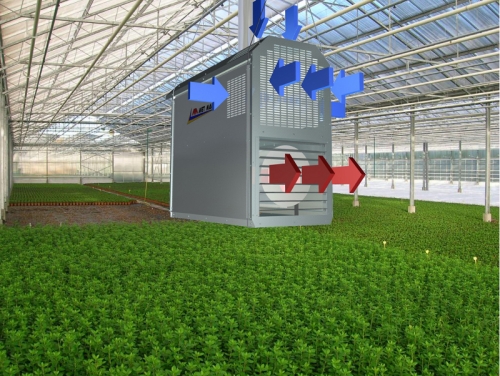
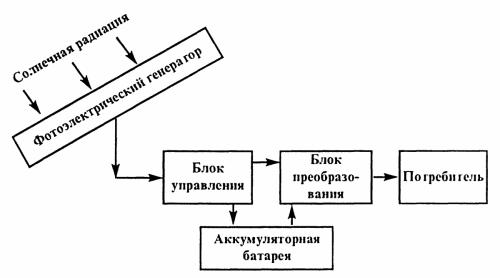


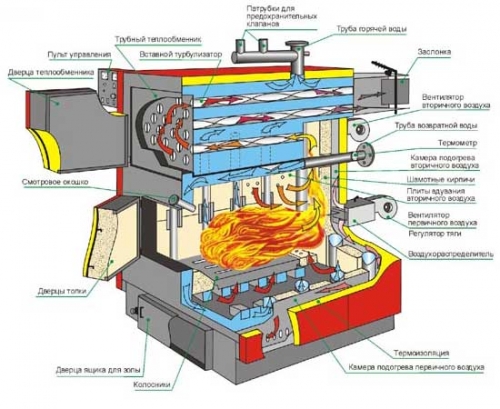
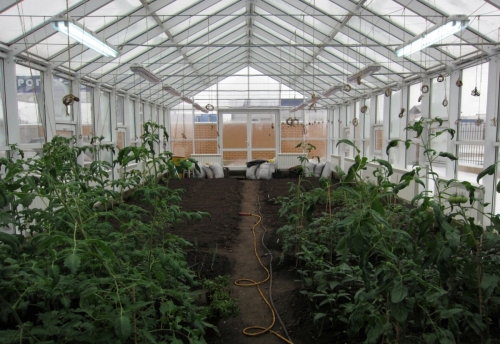
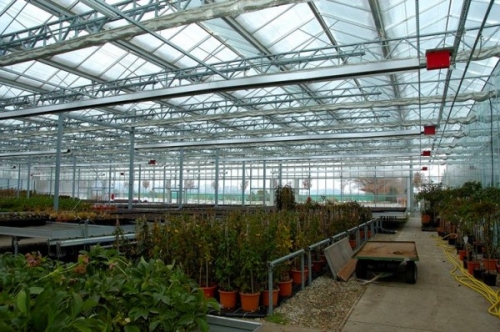
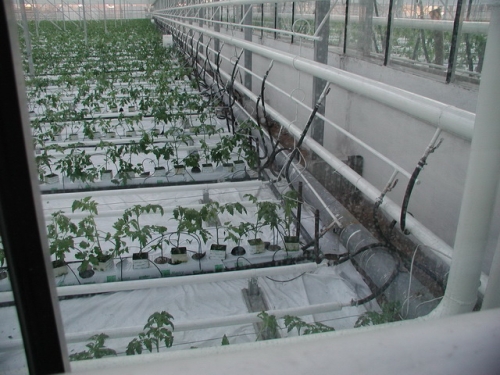
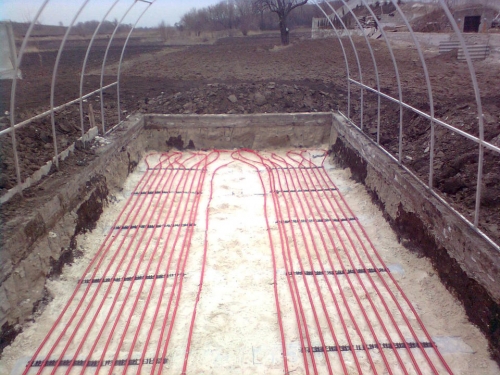
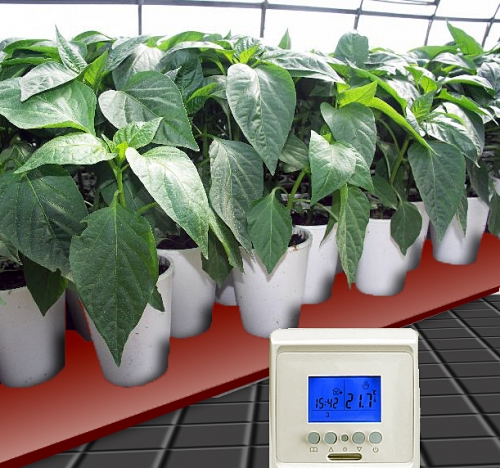
Ten 1 kW greenhouse not
Ten 1 kW will not warm the greenhouse! The required power for the greenhouse covered with a cellular polycarbonate of 6mm is 600W/m2!